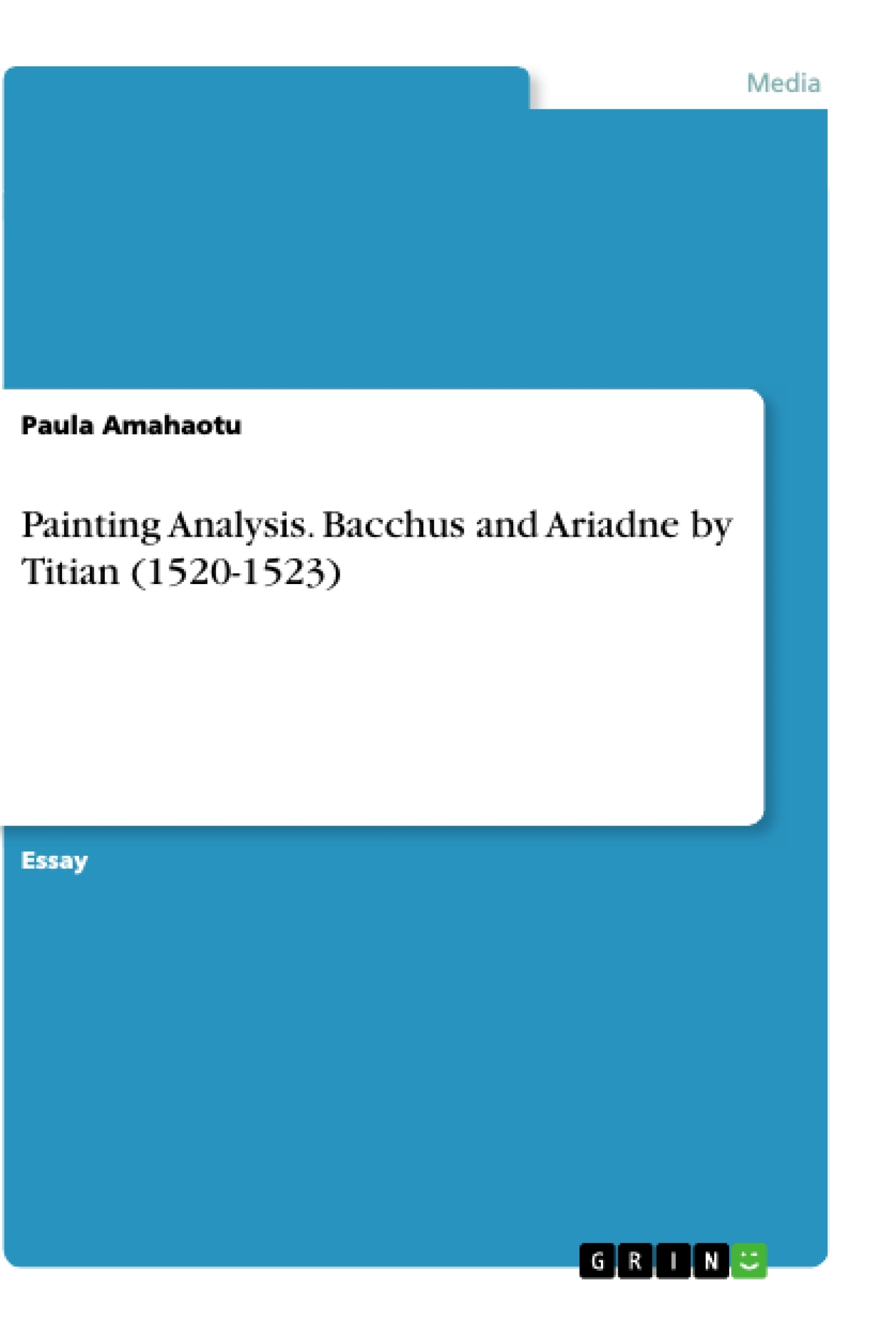„Bacchus and Ariadne“ is an Italian Renaissance painting by the Venetian painter Titian. It was painted around 1522-23 with oil on canvas. It has the size of 176.5 cm x 191 cm and is one painting of the cycle of paintings on mythological subjects produced for Alfonso l d’Este, the Duke of Ferrara, for the Camerino d’Alabastro. At the moment it is exhibited at the National Gallery in London. The painting depicts various persons, some animals and a mythical creature standing on a cliff with a wide horizon.
Table of Contents
- Bacchus and Ariadne
- Background and History
- The Story of Bacchus and Ariadne
- Analysis of the Painting
- Conclusion
Objectives and Key Themes
This painting analysis aims to explore the story behind Titian's renowned artwork, "Bacchus and Ariadne," and delve into the significance of its various elements. The analysis examines the mythological context, historical influences, and artistic techniques employed by the artist. The main objective is to provide a comprehensive understanding of the painting's meaning and impact.
- The myth of Bacchus and Ariadne
- Titian's artistic style and techniques
- The symbolism and iconography of the painting
- The influence of the Italian Renaissance on the artwork
- The painting's place within the context of Titian's oeuvre
Chapter Summaries
- Bacchus and Ariadne: This chapter introduces the subject matter of the painting, providing a brief overview of the myth of Bacchus and Ariadne.
- Background and History: This chapter delves into the historical and artistic context surrounding the creation of the painting, exploring Titian's career, the Italian Renaissance, and the patronage of Alfonso I d'Este.
- The Story of Bacchus and Ariadne: This chapter focuses on the myth of Bacchus and Ariadne, tracing their individual stories and the fateful encounter that forms the basis of Titian's painting.
- Analysis of the Painting: This chapter delves into a detailed analysis of the painting's composition, symbolism, and artistic techniques.
Keywords
The key terms and concepts explored in this analysis include: Bacchus, Ariadne, Titian, Italian Renaissance, mythology, symbolism, iconography, composition, artistic technique, patronage, and the Duke of Ferrara.
- Quote paper
- Paula Amahaotu (Author), 2019, Painting Analysis. Bacchus and Ariadne by Titian (1520-1523), Munich, GRIN Verlag, https://www.grin.com/document/461273




